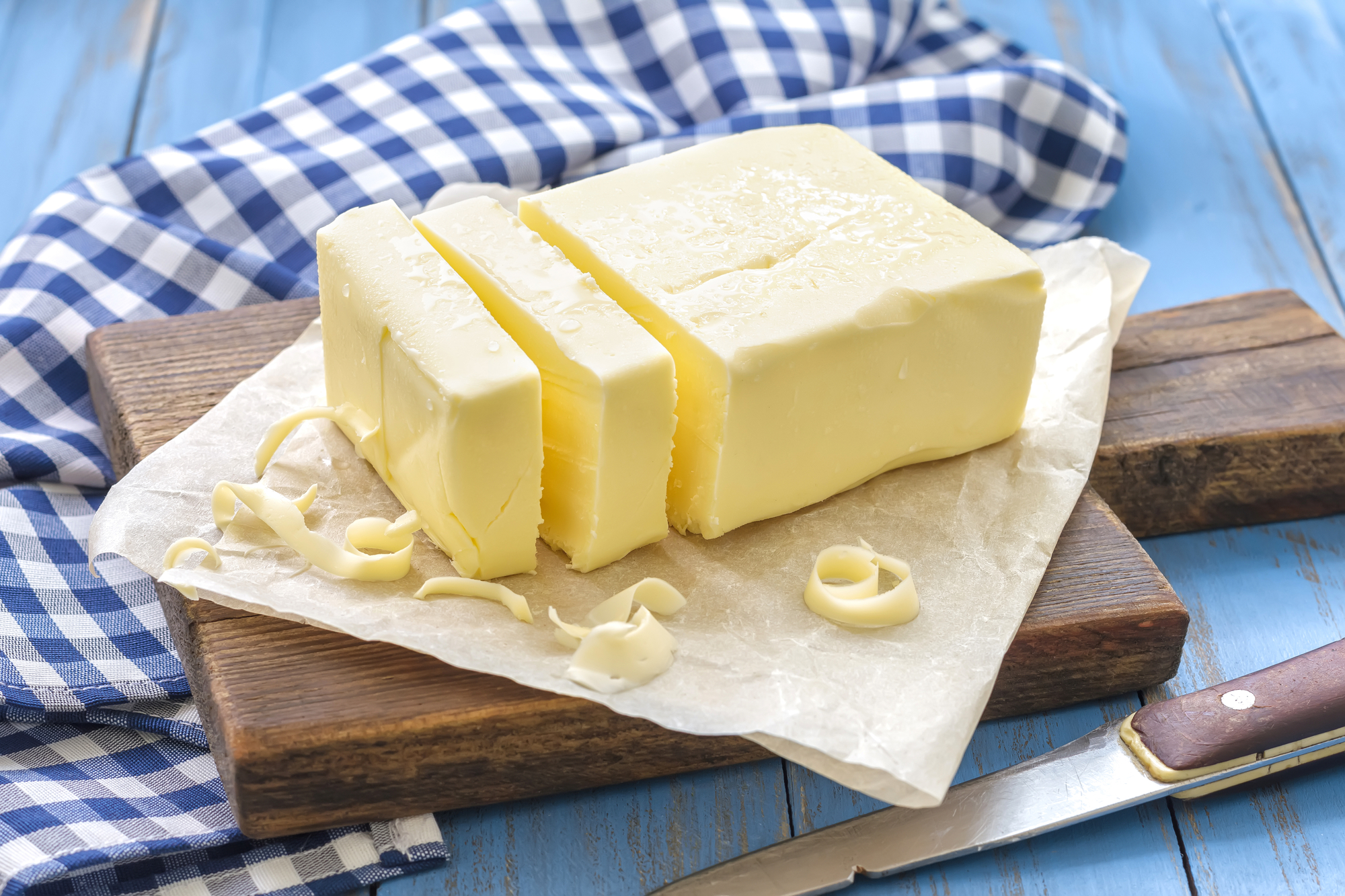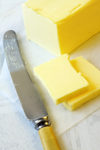
Artificial Butter / Butter Substitutes
Margarine was created in the late 1800s as a cheaper substitute for butter, which is made from the butterfat of milk. Originally margarine was made from beef fat, and then from lard and various seed oils. Margarine wasn’t accepted right away, and there was often deception in its manufacture. Today, of course, the food industry is much more regulated.
INFORMATION BELOW FROM 1800s COOKBOOKS
BUTTER SUBSTITUTES
In about the year 1870, through a desire to procure a cheaper article than butter for the poorer classes of France, came the manufacture of the first substitute for butter. Since that time the use of butter substitutes has gradually increased, until at the present time millions of pounds are consumed every year. A certain amount of prejudice against their use exists, but much of this is unnecessary for they are less likely to be contaminated with harmful bacteria than the poorer qualities of butter. Then, too, they do not spoil so readily, and for this reason they can be handled with greater convenience than butter.
OLEOMARGARINE
The best substitute for butter and the one most largely used is called oleomargarine, which in the United States alone constitutes about two and one-half per cent of all the fat used as butter.
This fat is called by various other names, such as margarine and butterine, but oleomargarine is the name by which the United States authorities recognize the product. It is made by churning fats other than butter fat with milk or cream until a butter-like consistency is obtained.
Originally, pure beef fat was employed for this purpose, and while beef fat is used to a great extent at present, lard, cottonseed oil, coconut oil, and peanut oil are also used. Whatever fats are selected are churned with milk, cream and, for the finest grades, a considerable percentage of the very best pure butter. After they are churned, the oleomargarine is worked, salted, and packed in the same manner as butter.
The manufacture and sale of butter substitutes are controlled by laws that, while they do not specify the kind of fat to be used, state that all mixtures of butter with other fats must be sold as oleomargarine. They also require that a tax of ten cents a pound be paid on all artificially colored oleomargarine. Therefore, while coloring matter is used in some cases, this product is usually sold without coloring. In such an event, coloring matter is given with each pound of oleomargarine that is sold. Before using the oleomargarine, this coloring matter is simply worked into the fat until it is evenly colored.
OLEOMARGARINE LAWS
In 1886 Congress passed the “Oleomargarine Bill,” defining butter to be an article made solely from milk and cream. It imposes a tax of two cents per pound upon oleomargarine and similar butter substitutes, compels their sale in certain sized packages, plainly marked or branded with the name of their contents, and requires manufacturers and dealers to take out special licenses, all under heavy penalties. Some of the State laws, restricting the sale of oleomargarine, are still more stringent, and its consumption has diminished, although it is still used in some sections and extensively exported.
RENOVATED BUTTER
Another substitute that is sometimes used to take the place of the best grades of butter is renovated, or processed butter. This is obtained by purifying butter that is dirty and rancid and that contains all sorts of foreign material and then re-churning it with fresh cream or milk. The purifying process consists in melting the butter, removing the scum from the top, as well as the buttermilk, brine, and foreign materials that settle, and then blowing air through the fat to remove any odors that it might contain. Butter that is thus purified is replaced on the market, but in some states the authorities have seen fit to restrict its sale.
ARTIFICIAL BUTTER
Various fraudulent preparations are sold as butter. Oleomargarine, one of the commonest, is made from tallow or beef-fat, cleaned and ground like sausage, and heated, to separate the oil from the membranes. It is then known as “butter-oil,” is salted, cooled, pressed, and churned in milk, colored with annatto, and treated the same as butter. Butterine, another artificial product, is prepared by mixing butter-oil and a similar oil obtained from lard, then churning them with milk.
An eminent analyst gives the following excellent way of distinguishing genuine butter from oleomargarine: “When true butter is heated over a clear flame, it ‘browns’ and gives out a pleasant odor, that of browned butter. In heating there is more or less sputtering, caused by minute particles of water retained in washing the butter. On the bottom of the pan or vessel in which true butter is heated, a yellowish-brown crust is formed, consisting of roasted or toasted casein.
When oleomargarine is heated under similar circumstances, it does not ‘brown,’ but becomes darker by overheating, and when heated to dryness, gives off a grayish steam, smelling of tallow. There is no ‘sputtering’ when it is being heated, but it boils easily. If a pledget of cotton or a wick saturated with oleomargarine be set on fire and allowed to burn a few moments before being extinguished, it will give out fumes which are very characteristic, smelling strongly of tallow, while true butter behaves very differently.”
TESTING BUTTER SUBSTITURES
Very often oleomargarine and processed butter bear such a close resemblance to genuine butter that it is almost impossible to detect the difference. However, there is a simple test by which these substitutes can always be distinguished from butter, and this should be applied whenever there is any doubt about the matter. To make this test, place the fat in a tablespoon or a small dish and heat it directly over the flame until it boils, stirring it occasionally to assist in the melting. If it is oleomargarine or processed butter, it will sputter noisily and take on a curdled appearance; whereas, if it is butter, it will melt and even boil without sputtering, although it foams to a certain extent.
Image from Deposit Photos
=================================================
MORE READING:
MARGARINE, History, Manufacturing, Nutrition, etc.
This is quite interesting.
Butter vs, Margarine Podcast
From the Science History Institute
=================================================

2 thoughts on “Artificial Butter / Butter Substitutes”
I read a lot about this in 19th century newspapers when customers would not be told what they were buying was not butter. At least now we know and can make a choice. My choice is always real butter which is actually far more healthy.
My mother always bought margarine and I did, too, until just a few years ago. Now it’s butter only and from pasture raised cows, if I can find it.